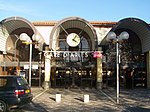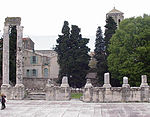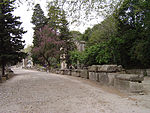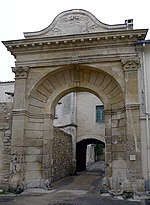Montmajour Abbey
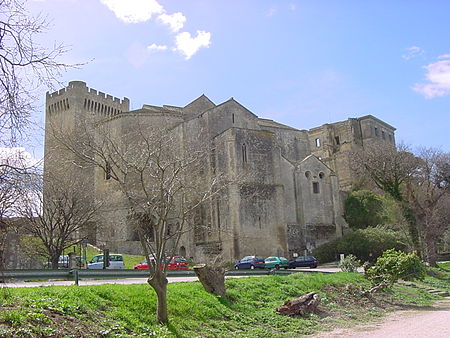
Montmajour Abbey, formally the Abbey of St. Peter in Montmajour (French: Abbaye Saint-Pierre de Montmajour), was a fortified Benedictine monastery built between the 10th and 18th centuries on what was originally an island five kilometers north of Arles, in what is now the Bouches-du-Rhône Department, in the region of Provence in the south of France. The abbey complex consists of six sections: the hermitage, dating from the 11th century, which includes the Chapel of St. Peter; the cloister, built during the 12th and 13th centuries; the adjacent Chapel of the Holy Cross, built during the 12th century; the fortified Monastery of St. Peter, built during the 14th century; the Tower of Abbot Pons de l'Orme, dating from the same period; the Maurist monastery, built in the 17th century.The abbey is noted for its 11th–14th-century graves, carved in the rock, its subterranean crypt, and its massive unfinished church. It was an important pilgrimage site during the Middle Ages, and in the 18th century it was the site of a large Maurist monastery, now in ruin. The abbey and the landscape around it were frequently painted and drawn by Vincent van Gogh. During the production for the 1968 film, The Lion in Winter that featured the abbey, Katharine Hepburn's dressing room was accommodated in the basement.It has been listed since 1840 as a monument historique by the French Ministry of Culture. Today the ruins of the abbey are cared for as a historic monument by the Centre des monuments nationaux.
Excerpt from the Wikipedia article Montmajour Abbey (License: CC BY-SA 3.0, Authors, Images).Montmajour Abbey
D 17, Arles
Geographical coordinates (GPS) Address External links Nearby Places Show on map
Geographical coordinates (GPS)
| Latitude | Longitude |
|---|---|
| N 43.705555555556 ° | E 4.6638888888889 ° |
Address
Cloître
D 17
13200 Arles
Provence-Alpes-Côte d'Azur, France
Open on Google Maps


